Introducing Sedum: Your Succulent Ally in the Garden
Welcome to the lush world of sedums, the versatile stars of the succulent universe! These hardy plants are a dream come true for both seasoned green thumbs and gardening novices. Sedums are more than just eye-candy; they’re survival artists, adapting to a range of conditions and gracing our gardens with minimal fuss.
Imagine a sedum, an epitome of resilience, thriving in that sunny spot where other plants might falter. It’s no wonder they’re a top pick in gardening circles—from ornate garden beds to the rocky allure of xeriscapes, sedums know how to make their presence known. But the secret sauce to their success? It all starts with knowing where to plant sedum for that picture-perfect growth.
img src=”https://images.pexels.com/photos/4162025/pexels-photo-4162025.jpeg” alt=”Optimal sedum planting location”>
These succulent champions crave the sun’s embrace and well-draining soil—a match made in horticultural heaven. Think about that south-facing slope in your yard, begging for a splash of life; sedums will not only accept the challenge but flourish, painting the terrain with their vibrant foliage.
For an extra dose of wisdom on succulent care, I recommend checking out “15 Tips for Planting Succulents Outdoors.” Get ready to transform your green space into a sedum sanctuary!
Selecting the Perfect Spot for Your Sedum
Setting up your sedum for success starts with picking the ideal location—think of it as real estate for your greens; where you plant makes all the difference! This isn’t just a “stick it in the ground and forget it” scenario. We’re here to dish out the sunny secrets for a sedum paradise.
Sunlight is like the sedum’s morning coffee—it kickstarts their day. These hardy beauties crave the sun’s embrace, with six hours of direct light being the sweet spot. But here’s the twist: not all sedums are sun worshipers. Some varieties play it cool in part-shade. The takeaway? Understand your sedum’s personality—whether it’s a sun-seeker or shade-lover—to ensure they have a glow that rivals summer’s best days.
Drainage is next on the garden hit-list. Wet feet are a no-no for these succulent stars. Ensuring that the soil drains quicker than a tub with no stopper means your sedums won’t sit in soggy despair. And if you’re blessed with a slope, use it. Sedums can hold onto those inclines with the grace of a seasoned climber, turning potential runoff zones into a showcase of survival and splendor.
Now, think competition—like a botanical edition of ‘Survivor’. Your sedums need elbow room, away from garden bullies that could choke out their light or root space. Plant companions should be the sedum’s cheerleaders, not competitors. Mint, I’m looking at you—stay in your lane!
And be sure to check out a video that dives into the art of plotting the for your sedums!
Remember that sedum is a team player in the garden, collaborating with fellow plants to weave a tapestry of textures and colors. If you’re curious about getting your hands dirty and taking your sedum from tiny cuttings to garden giants, take a peek at our tricks for propagating sedums with success. It’s a simple yet rewarding journey once you’ve locked down the perfect planting grounds.
Soil Requirements: Setting the Foundation for Sedum Success
Thinking about soil for your sedum might not get your heart racing, but, oh buddy, it should! It’s like planning the ultimate buffet for your succulents. While sedum isn’t fussy like some high-maintenance divas in the plant world, there are a few non-negotiables for them to thrive. Let’s talk about the Michelin-star conditions for your hardy, leafy friends!
First up, sedum is all about embracing the drainage dream. Imagine roots gasping for air in soggy soil—sounds tragic, right? To prevent that soggy debacle, you need a soil mix that drains quicker than a bathtub. A combination of potting soil, coarse sand, and perlite is a trifecta that ensures excess water says “au revoir” as soon as it hits the dirt.
If you’re playing matchmaker with your garden beds or containers, the key is to not drown your sedum in kindness. That means no overwatering and definitely no regular potting soil straight from the bag. Think lean and mean – sedum loves soil that’s low on nutrients. Too much fertilizer? That’s a one-way ticket to weak, floppy plants that can’t even support their own weight. Not a good look.
So, how do you ensure your sedum gets the gourmet soil it craves? It’s simpler than baking a pie. Start with the right spot—full sun is the happy place for sedum, warming those succulent leaves to perfection. Then whip up a deliciously airy and well-draining soil mix. Remember, garden beds should be fluffy, not clumpy—kind of like a perfect pillow. If you need a little more guidance on preparing those garden beds, we’ve got you covered.
Here comes the fun part—watching those sedum babies take root and flourish. But maybe you’re a visual learner or just want to make absolutely sure you’re on the right track? Well, we’ve found the perfect video to help you out. It’s not just about telling, it’s about showing!
Take it from a sedum that’s seen it all: they love a good sun-baked hillside or a well-loved pot on your sunny patio. Yes, they’re adaptable, but they don’t want to be swimming. Get the foundation just right, and your sedum will reward you with growth more thrilling than the finale of your favorite show. Stay tuned as we continue to unearth the secrets of cultivating sedum that’s not just surviving, but thriving!
Sunlight to Shade: Understanding Sedum’s Light Preferences
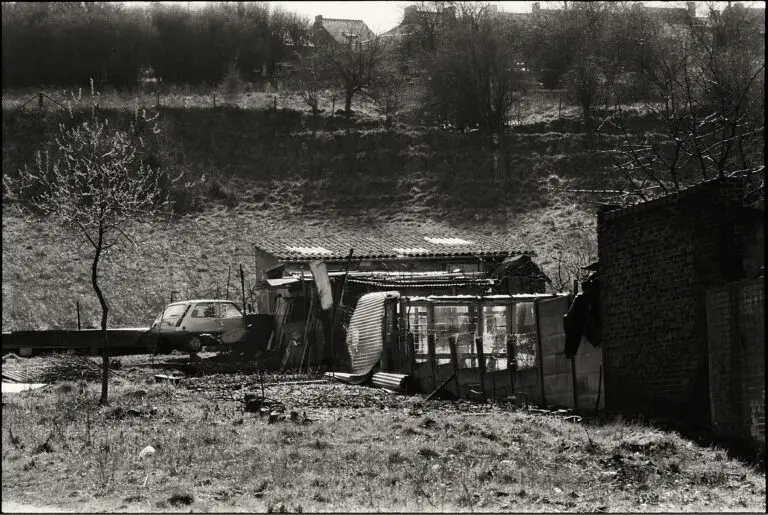
Let’s talk about what sedum really wants—a sweet spot under the sun (and sometimes a little shade). Think of sedum like that friend who loves a good sunbath but knows when it’s time to pop under the umbrella for a cooldown. Yes, sedum plants are sun-seekers, but they also have a savvy sense of when too much is just… well, too much.
Imagine walking into your garden, the fresh morning air tickling your senses. As the sun marches across the sky, patterns of light and shadow play hide and seek amongst your plants. This is the stage where your sedum can shine—if you get the location just right. It’s about balance: A touch of morning cheer with some respite when the sun hits its peak.
You’ve seen gardens bask in the morning light, filled with joy and color, right? Sedum takes that morning energy and turns it into growth power. But as the afternoon sun burns down, sedum appreciates a bit of shade to prevent a solar scorch. Observing how the sunlight dances in your garden throughout the day will let you play matchmaker, pairing your sedum with the perfect plot that has just the right mix of sunshine and shade.
So, what’s the verdict? Sedum plants adore light, but just like us, they need protection from the midday intensity. Place them where they’ll receive a morning serenade of sunlight and a little shade siesta when the sun gets bossy. Keep watch, take notes, and soon your sedum will be living its best life, all thanks to your keen eye for light.
Planting Techniques for Sedum: A Step-by-Step Guide
Welcome, green thumb enthusiasts! Let’s get down to earth with some tips and tricks to plant sedum—the hardy, low-maintenance succulent that promises to add a pop of color and texture to your garden spaces. Whether cascading over rock walls or filling in those problem dry spots, sedum is the super plant that’s both beautiful and forgiving. Ready to get your hands dirty? Let’s dig in!
Step 1: Choosing Your Spot
Location, location, location! Sedums thrive in an area with good light and excellent drainage. Imagine the sun dappled corners of your garden or that sunny balcony where you love to sip your morning coffee. These sun-soaked spots are prime real estate for your sedum plants.
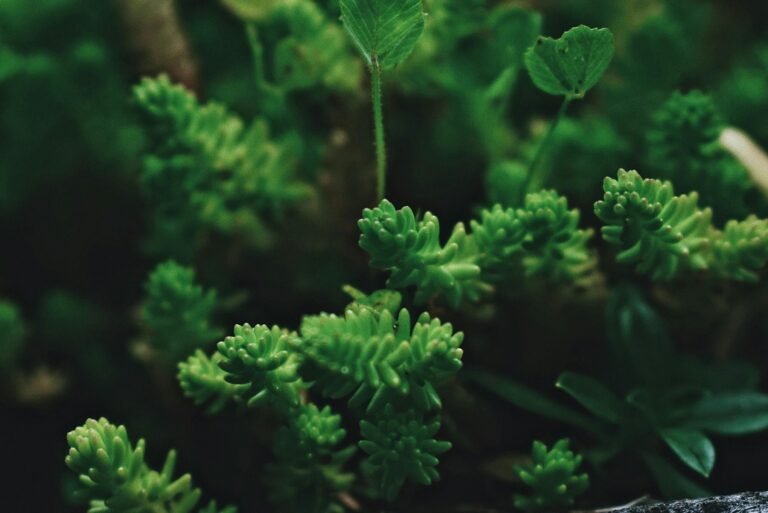
A sedum uses its fleshy leaves to store water, making it a champion in drought-like conditions. So, think about that hillside in your backyard that’s more Sahara than soil—it’s a perfect canvas for the sedum’s drought-defying abilities!
Step 2: Preparing the Soil
Before you introduce your sedum to its new home, let’s prep the foundation. Sedum isn’t picky, but it does have a strong dislike for wet feet. Mixing in some sand or gravel will create a well-draining environment they’ll absolutely adore. Remember, happy roots make for a happy plant!
Step 3: Digging In
With your soil prepped, it’s time to plant. You’ll want to dig a hole just as deep as the root ball and twice as wide. This gives your sedum plenty of room to spread out and grow. Speaking of growth, have you wondered about how big your sedum might get? Understanding their growth habits can help you prevent a future game of garden Tetris.
Step 4: Spacing Is Key
Imagine a group of people crowded in an elevator — not very comfortable, right? Plants feel the same way. So, when planting multiple sedums, give them space to breathe. A good rule of thumb is to place them about 6 to 12 inches apart. This allows each plant the independence to thrive, mingle roots with its neighbors, and form a lush tapestry of foliage.
Step 5: The Perfect Depth
Planting sedum isn’t like burying treasure; you don’t want to go too deep. Set your sedum in the hole so that the top of the root ball is level with the soil surface. This ensures they don’t end up buried alive and can stretch their leaves towards the sun with ease.
Step 6: Water Wisely
Finally, let’s talk H2O. After planting, give your sedum a good drink to settle those roots in. But, just like the perfect martini, it’s all about moderation. Overwatering is a definite no-no—sedums prefer a ‘less is more’ approach. Aim for that sweet spot of moist but not soggy, ensuring your sedum’s success.
With these guidelines in hand, you’re all set to usher in a new era of growth in your garden. Sedums are ready for a standing ovation in their prime locations, and you, my friend, are ready to take a bow. Happy planting!
Watering Wisdom for Sedum Plants
Cultivating sedum plants can feel like channeling your inner Goldilocks—it’s all about balance. Do you know that sedum, much like a seasoned world traveler, thrives on just enough sustenance to keep their vibrant journey through your garden a lively one? Let’s talk about giving them that perfect sipping schedule to quench their thirst—without drowning their adventuring spirits.
In the sedum world, ‘less is more’ is the mantra to follow. To start, imagine you’re treating your sedum to a spa day; it’s all about the gentle, pampering touch. A watering routine for these succulent beauties isn’t a daily plunge; it’s more akin to a light, refreshing mist—a minimalist’s guide to hydration. Ponder this real-life nugget: Just as a cactus in the parched desert waits for the rare rain, sedum holds out for those occasional deep drinks to replenish its reserves.
Timing is critical: sedum basks in the warmth of the morning sun, opening up in all its glory. That’s your cue to step in with your watering can. The goal? Soak the soil thoroughly, but don’t let the water sit. Imagine you’re brewing a cup of artisanal coffee; you pour just enough to blend the flavors beautifully, without any unwanted bitterness that comes from overdoing it. Apply that same care, and your sedum won’t have to suffer the root rot blues.
Adapting your watering wisdom to the seasons is key. Your sedum plants are savvier than some might think, settling down in the cool of fall and ‘sleeping’ through the winter. Reduce those watering sessions as the temperatures drop, maintaining just enough moisture to avoid turning your sedum’s dreams into a freeze-dried nightmare.
It’s evident, isn’t it? Watering sedum isn’t about sticking to a rigid rulebook; it’s about observation, finesse, and understanding the ‘sedum cycle.’ Keep your eyes peeled, watch for the tell-tale signs—a droopy leaf here, a shriveled stem there—and you’ll soon speak fluent ‘sedumese’, becoming the wise watering whisperer your green family needs.
Get started on your path to sedum success with a visual cue. Feast your eyes on this nourishing sight:
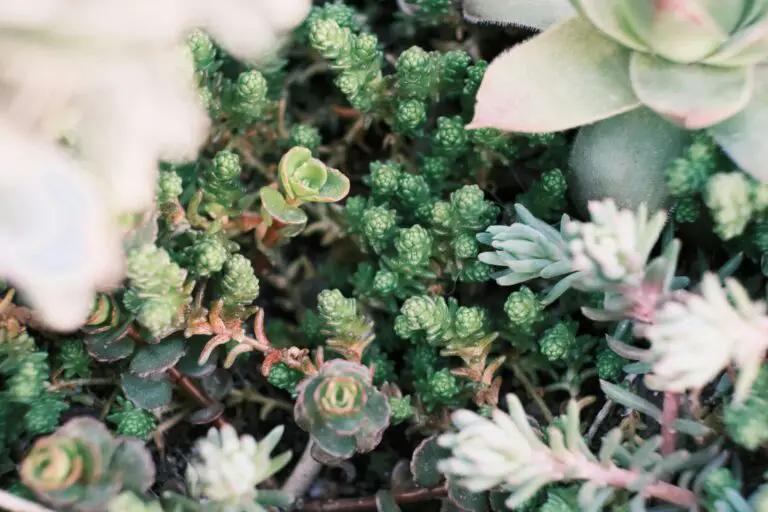
Notice the contented expanse of sedum in the greenhouse? Follow these insights, and your sedum sanctuary will embody that same serene and hydrated vigor, without any waterlogged woes.
Nurturing Your Sedum: Long-term Care and Maintenance
After you’ve nestled your sedum into its cozy new residence, the real fun begins – nurturing these hardy perennials to their full potential. Picture this: you’re out in the garden, the sun casting a warm glow over the vibrant sedum blossoms, and you feel a sense of pride knowing that with your help, they’re thriving. Now, let’s dive into the essentials of sedum upkeep that’ll turn your garden into the envy of the neighborhood.
First things first, let’s talk about weeding – it’s like tidying up your living room before guests arrive. Sedums prefer a “less is more” approach when it comes to their companions. Clear away any intruders promptly to prevent them from hogging the sunlight and nutrients. Imagine weeding as a strategic game to protect your precious plant; each weed you pluck is a victory for your sedum.
Mulching is next on the agenda – it’s like a protective blanket for your plants, keeping them snug and moist. By adding a layer of mulch, you give your sedums extra insulation from heat in summer and cold in winter. Use organic materials like straw or shredded bark and watch as your sedums bask in the glory of this thoughtful gesture.
When the seasons shift, your sedum care routine should too. Spring beckons for a gentle awakening with moderate watering and perhaps a light fertilizer to welcome your sedums back from their winter slumber. As the summer heat intensifies, taper the watering schedule and let these drought-tolerant stars shine. Autumn is the time to celebrate your garden’s achievements and prepare for rest, while winter is the quiet lull when your sedums gather strength.
Seasonal care is all about anticipation – feel the rhythm of nature and align your gardening practices with it. Think of your green thumb as a conductor’s baton, guiding the ebb and flow of growth and rest, ensuring your sedum’s life cycle is as harmonious as a well-composed symphony.
Lastly, don’t forget that every sedum has its own personality; some may thrive on neglect while others seek more attention. Observe, interact, and cater to their individual needs. Your garden is a living, breathing ensemble, each plant a distinct character that contributes to the garden’s story – a story of growth, resilience, and beauty, made possible by your unwavering dedication.
Incorporating real-life examples, a conversational tone, and an analytical perspective creates an engaging and informative narrative. Let these tips become the tools you wield to nurture and revel in the thriving growth of your sedum garden year after year.
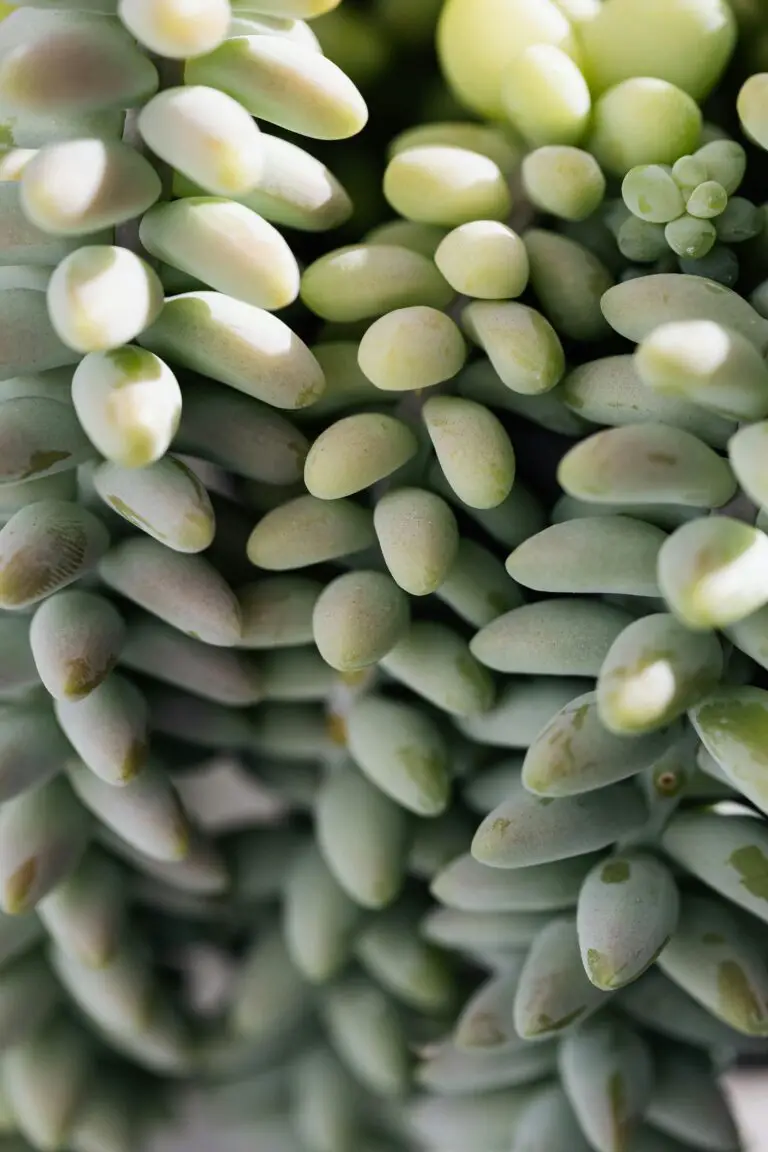
Common Challenges and Solutions in Growing Sedum
Embarking on the sedum-growing journey brings its own set of trials and tribulations. But fear not, for every challenge there’s a solution ripe for the picking! Imagine you’re tucking your vibrant sedum into its new garden bed when you spot a sly aphid scouting out its next meal. Panic not—this is but one of the common hurdles gardeners face when sowing their sedum seeds.
Pest Problems: Defend Your Sedum
In the world of sedum, pests are akin to uninvited garden gatecrashers. Aphids, mealybugs, and scale might attempt to throw a feast on your beloved plants. Here’s the deal: keep a vigilant eye out and act swiftly with insecticidal soaps or neem oil treatments, ensuring these critters don’t turn your sedum sanctuary into their playground.

Disease Dilemmas: A Stitch in Time
Then, there’s the fungal foe—root rot—a result of excessive love in the form of water. Sedum prefers to stay on the drier side, so make sure you’re not drowning your plants in your affections. Providing well-drained soil and thoughtful watering rituals can keep such watery woes at bay. And should the unthinkable happen, and your sedum’s leaves start sporting unsightly spots, reach for fungicides but do so sparingly and wisely, always favoring prevention over cure.
Environmental Stresses: Sedum’s Kryptonite
Be it scorching sun or Jack Frost’s touch, extreme temperatures can stress your succulent companions. In the scalding summer, mulch is the hero, offering a cool blanket to protect your plants. In the chill of winter, consider fabric covers to ward off frostbite. Adaptability is key—just like choosing the right outfit for the weather, choosing the right spot and care for your sedum according to the season is crucial.
Whether it’s battling bugs, fending off fungus, or negotiating nature’s whims, growing sedum is like nurturing a miniature ecosystem. Tending to these common challenges with practical solutions ensures your sedum doesn’t just survive but thrives, painting your garden with their resilient beauty.
Sedum Throughout the Seasons: What to Expect
Embarking on the sedum journey, whether as a novice or a seasoned gardener, presents a palette of changing vistas through the seasons. As the earth makes its celestial pirouette, sedum morphs in tune, showcasing a kaleidoscope of foliage and blooms that whisper tales of resilience and beauty. Let’s dig into the magical seasonal shifts of this hardy succulent and reveal how you can dance along with its natural rhythm for a thriving garden showpiece.
Spring’s Sprouting Symphony
As the frosty fingers of winter relax their grip, spring heralds a burst of growth in sedum plants. You’ll witness them awaken, stretching out their stems like a yoga enthusiast greeting the dawn. In this season of rejuvenation, expect to see fresh shoots emerging, signaling a time for gardeners to clear away any remnants of winter’s cloak and foster this new growth with tender care and watchful eyes.
Summer’s Lush Tapestry
Rolling into summer, sedum hits its stride. Warmed by longer days, it unfurls a carpet of thick, fleshy leaves, sometimes edged with fiery hues, that become the envy of the plant kingdom. Flower buds push their way into the spotlight, promising a spectacle of star-shaped blossoms adored by bees and butterflies. For gardeners, this is a season of minimal intervention but vigilant hydration, ensuring that sedum doesn’t thirst in the heat of summer sun.
Autumn’s Flamboyant Flair
As autumn arrives, sedum plants don their festive garb. The flower heads, having burst into color, now mature into richer, deeper shades, mirroring the changing leaves around them. This transformation isn’t just eye candy; it’s a vital food source for pollinators prepping for winter. Savvy gardeners recognize this as a prime time to divide overcrowded clumps, giving each offshoot space to flaunt its autumnal finery.
Winter’s Stoic Stand
In the quiet chill of winter, while much of the garden slumbers, sedum projects a stoic silhouette. Those glorious blooms, now faded, stand tall and dried—natural sculptures amid snow and crystal frosts. This is a season of rest for the plant, but not for the gardener, who can now plan and dream of the cycle to commence anew, with the assurance that sedum will resiliently return.
Gardening with sedum through the seasons is akin to painting with a living palette. To enrich our verdant narrative, let’s take a visual detour and learn about cultivating this garden treasure. Here’s a must-watch guide that encapsulates the art of growing sedum, a companion video to our seasonal saga:
From the gentle sprouting of spring to the audacious display of autumn, sedum invites you to cherish every moment and embrace the ebb and flow of the garden’s heartbeat. Attend to your sedum with foresight and affection, and it shall reciprocate with a year-round spectacle of living art that will leave you, and your patch of earth, utterly transformed.
Showcasing Sedum Varieties: A Palette for Every Gardener
Welcome to the diverse world of sedum, where every gardener can find a hue, texture, and form that fits the unique tapestry of their garden dreams. If versatility had a name in the plant kingdom, it would be Sedum. From the stonecrop’s remarkable ability to thrive in rocky crevices to the lush carpets of ground-cover varieties, sedum plants offer a living kaleidoscope for any green space.
Imagine a chalky wall softened by the delicate rosettes of Sedum ‘Cape Blanco’, or enliven your dappled shade spots with Sedum sieboldii’s cool, round foliage dancing in the breeze. The sedum family greets the urban container gardener with a hardy handshake, with varieties like Sedum ‘Coral Carpet’ that endure city heat with grace, presenting an ever-changing color show through the seasons.
For those with larger plots, the stout stems and starry flowers of Sedum ‘Autumn Joy’ stand sentinel in the border, mingling with grasses and perennials, and beckoning a buzz of pollinator activity. It’s a plant that asks little but gives much, powering through heat, cold, drought, and neglect with a steadfast spirit.
Picture this: a rock garden jeweled with sedum gems, a sprawl of Sedum reflexum ‘Blue Spruce’ cascading like a botanical waterfall over stones, its blue-green needles providing a year-round spectacle. Whether you’re a seasoned gardener or a budding enthusiast, let’s explore which sedum can turn your garden into a living masterpiece.

With sedum, your garden becomes a canvas, and each variety a vibrant stroke of genius. So let’s delve into the array of sedum varieties that await your green-thumb command and transform your outdoor abode into a testament to nature’s magnificence.
Frequently Asked Questions
Delve into the world of sedums, those resilient and vibrant succulents that have captured the hearts of gardeners everywhere! Whether you’re a green-thumbed veteran or a budding plant enthusiast, it’s essential to address the plethora of questions swirling around about where to plant sedum. It’s like finding the perfect home for a dear friend—it has to be just right!
What’s the Ideal Spot for My Sedum to Flourish?
Imagine a sunny rockery that’s basking in the afternoon glow, a sight to be seen! That’s the sort of warm and well-drained environment your sedum is dreaming of. These hardy plants are the sun worshippers of the botanical world, thriving in those bright areas that other plants might shy away from. A south-facing garden edge, perhaps, or that quaint little corner by the white picket fence—sedum will make it their sun-kissed sanctuary.
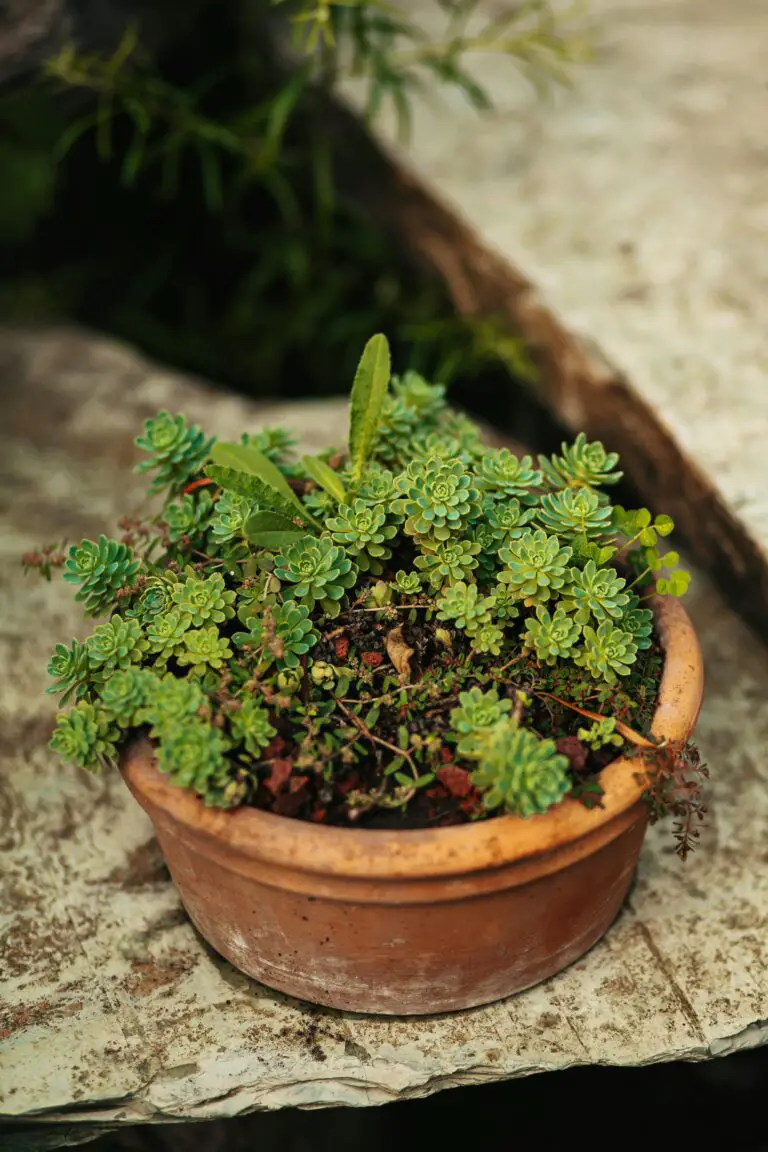
Which Soil Types Do Sedums Prefer?
Let’s get our hands dirty and talk soil! Sedums aren’t too picky, but they do have some preferences. They’re like the easy-going friend who’s content with a simple meal, as long as it’s well-drained. You see, sedum roots despise being waterlogged—it’s their pet peeve. Aim for a loamy or sandy soil that’s like a fluffy bed, letting excess moisture slip away so the roots can breathe easy and stretch out.
Can Sedums Play Nice with Other Plants?
Absolutely! Sedums are the perfect neighbors, getting along famously with other drought-tolerant plants. Picture a communal rooftop garden where sedums mingle with lavender and yarrow, creating a tapestry of color and texture. They’re like the social butterflies of the garden, bringing a sense of camaraderie to the plant community. Just be sure the plants you pair them with appreciate the same sunny conditions and drainage – it’s all about compatible living!
How Do I Protect My Sedum from Harsh Winters?
When winter whispers its chilly tales, sedums listen but remain undeterred. These plants are known for their impressive hardiness. Tuck them in a spot that’s sheltered from the harshest winds—a little alcove or a nook by a stone wall—and they’ll hunker down, snug as a bug. Come spring, they’ll unfurl their foliage like a phoenix rising, ready to dazzle once more.
So, now that you’ve had a glimpse into the world of planting sedum, you’re well-equipped to create a thriving haven for these delightful plants. Remember, the main characters in this garden story are sunlight, well-draining soil, and good vibes among flora friends. Keep these tips in mind, and watch as your sedum takes center stage, beaming with health and beauty!


